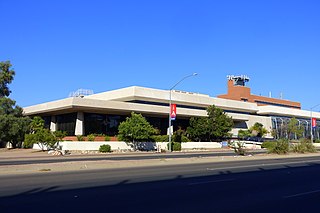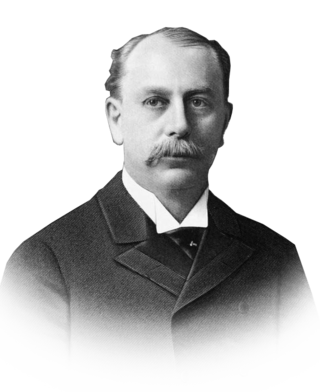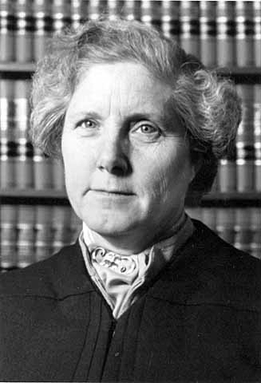
The University of Georgia School of Law is the law school of the University of Georgia, a public research university in Athens, Georgia. It was founded in 1859, making it among the oldest American university law schools in continuous operation. Georgia Law accepted 14.83% of applicants for the class entering in 2023.

Hamline University is a private university in Saint Paul, Minnesota, United States. Founded in 1854, Hamline is the oldest university in Minnesota, the first coeducational university in the state, and is one of five Associated Colleges of the Twin Cities. The university is named after Bishop Leonidas Lent Hamline of the United Methodist Church. As of 2017, Hamline had 2,117 undergraduate students and 1,668 graduate students.

The University of Minnesota Law School is the law school of the University of Minnesota in Minneapolis, Minnesota. The school confers four law degrees: a Juris Doctor (J.D.), a Master of Laws (LL.M.), a Master of Science in Patent Law (M.S.P.L.), and a Doctor of Juridical Science (S.J.D.). The J.D. program offers a number of concentration opportunities, as well as dual and joint degree options with other graduate and professional schools of the university.

University of Arizona James E. Rogers College of Law, also known as the University of Arizona College of Law, is the law school at the University of Arizona located in Tucson, Arizona, United States and was the first law school founded in the State of Arizona, opening its doors in 1915. It was renamed in 1999 in honor of broadcasting executive James E. Rogers, a 1962 graduate of the school, and chairman of Sunbelt Communications Company based in Las Vegas, Nevada.
The University of Iowa College of Law is the law school of the University of Iowa, located in Iowa City, Iowa. It was founded in 1865.

Hamline University School of Law was a private law school affiliated with Hamline University in Saint Paul, Minnesota. It was founded in 1972 as the Midwestern School of Law by a group of legal professionals. In 1976, Midwestern School of Law was absorbed by Hamline University as its own school of law.

Loyola University New Orleans College of Law is a private law school in New Orleans, Louisiana affiliated with Loyola University New Orleans. Loyola's law school opened in 1914 and is now located on the Broadway Campus of the university in the historic Audubon Park District of the city. The College of Law is one of fourteen Jesuit law schools in the United States. It is also one of the few law schools in the nation to offer curricula in both Civil Law and Common Law. The school releases several academic journals, most notable of which is the Loyola Law Review.
The University of Kansas School of Law is the law school of the University of Kansas, a public research university in Lawrence, Kansas. The University of Kansas Law School was founded in 1893, replacing the earlier Department of Law, which had existed since 1878. The school has more than 60 faculty members and approximately 315 students. The school is accredited by the American Bar Association and is a member of the Association of American Law Schools.

Wayne State University Law School is the law school of Wayne State University in Detroit. Wayne Law is located in Midtown, Detroit's Cultural Center. Founded in 1927, the law school offers juris doctor (J.D.), master of laws (LL.M.), online master of studies in law, and minors in law degree programs. Wayne Law's more than 12,000 alumni include judges, justices, law firm partners and government officials working in every major market in the United States and at least 17 countries.
John E. Simonett was an attorney and associate justice of the Minnesota Supreme Court. He was famous for his wit and thoughtfulness, characteristics reflected both in his judicial opinions, and in his writings and speeches. In 2007, he was named one of the 100 most influential attorneys in Minnesota history. Of his six daughters and sons, two became judges, one serving as the fourth Chief Judge of the Minnesota Court of Appeals from 1994 to 1995.

William & Mary Law School, formally the Marshall-Wythe School of Law, is the law school of the College of William & Mary, a public research university in Williamsburg, Virginia. It is the oldest extant law school in the United States, having been founded in 1779 at the urging of alumnus Thomas Jefferson. As of 2023, it has an enrollment of 606 full-time students seeking a Juris Doctor (J.D.) or a Master of Laws (LL.M.) in the American Legal System, a two or three semester program for lawyers trained outside the United States.

William Mitchell was a lawyer and judge notable for his work in Minnesota as a member of the 3rd Minnesota District Court and Minnesota Supreme Court. He was also the first dean of the St. Paul College of Law, later renamed in his honor as the William Mitchell College of Law.

The University of Missouri School of Law is the law school of the University of Missouri. It is located on the university's main campus in Columbia, forty minutes from the Missouri State Capitol in Jefferson City. The school was founded in 1872 by the Curators of the University of Missouri. Its alumni include governors, legislators, judges, attorneys general, and law professors across the country. According to Mizzou Law's 2016 ABA-required disclosures, 82 percent of the 2016 class obtained full-time, long-term, JD-required employment nine months after graduation.
Douglas Kenneth Amdahl was an American lawyer and judge from Minnesota. He served as Chief Justice of the Minnesota Supreme Court from December 1981 to January 1989.

Hiram Fairchild Stevens was an American lawyer, politician, and academic from Minnesota. He was one of the five co-founders of William Mitchell College of Law and a charter member of the American Bar Association.

Robert Joseph Sheran was an American lawyer, politician, and judge. He was appointed Chief Justice of the Minnesota Supreme Court by Governor Wendell Anderson, serving from December 1973 to December 1981. He previously served as an associate justice on the court from January 1963 to July 1970, appointed by Governor Elmer L. Andersen. He is the only person to have been appointed to two separate tenures on the Minnesota Supreme Court by different governors.
Esther Jeanne Moellering Tomljanovich is an American lawyer and judge who served as an associate justice of the Minnesota Supreme Court.

Sara Rosalie Wahl was an American feminist, lawyer, public defender, clinical law professor, and judge and the first woman to serve on the Minnesota Supreme Court where she served for seventeen years. Governor Perpich nominated Wahl to the Minnesota Supreme Court in 1977 and Wahl won the election to the seat in a non-partisan election in 1978, defeating three male candidates. She chaired the state's Gender Bias Taskforce and Racial Bias Taskforce and led the American Bar Association's efforts to establish clinical legal education. She was a champion for the mentally ill and for displaced homemakers. She wrote 549 opinions including for the majority in holding that different penalties for crack and powder cocaine were unconstitutional in State v. Russell .

Maynard E. Pirsig, LLD, was an American legal scholar. He was a professor, and dean, of the University of Minnesota Law School; a Minnesota Supreme Court justice; director of the Minnesota Legal Aid Society, and an advisor for the Indonesian, Puerto Rican, and El Salvadoran legal systems. He defined Legal Ethics in the 1974 Encyclopedia Britannica. His law books were widely used in schools across the country, including his casebook Judicial Administration--which Pirsig used for the United States' first law reform course, early 1930s. He was mentored by Everett Fraser, Roscoe Pound, and Felix Frankfurter.
Mitchell Hamline School of Law is a private law school in Saint Paul, Minnesota. It is accredited by the American Bar Association (ABA) and offers full and part-time legal education for its Juris Doctor (J.D.) degree.














